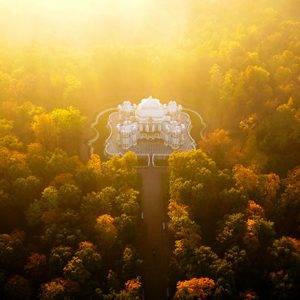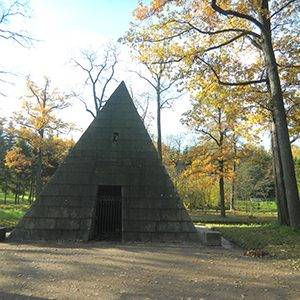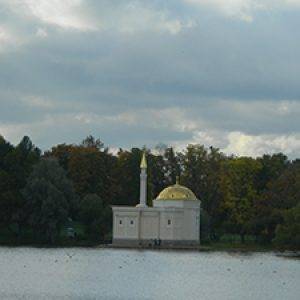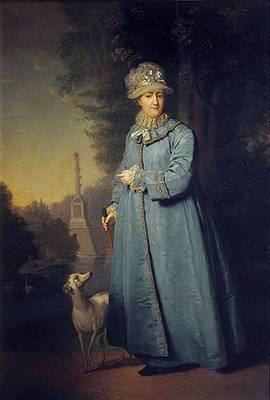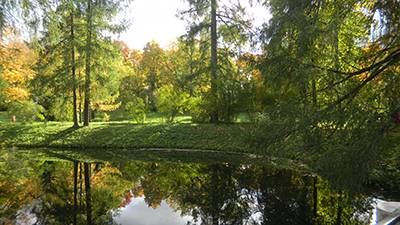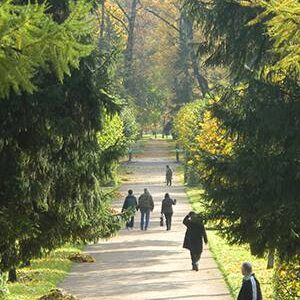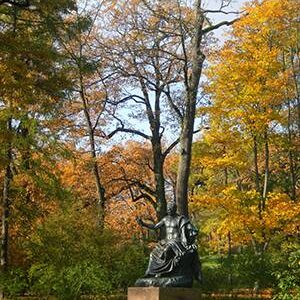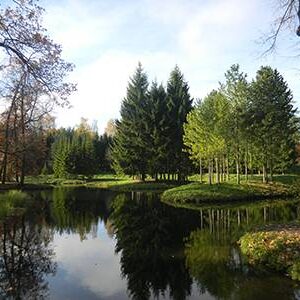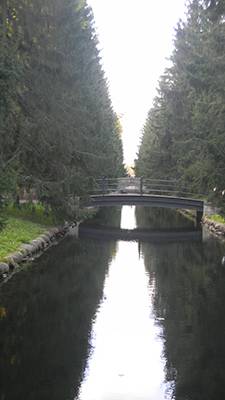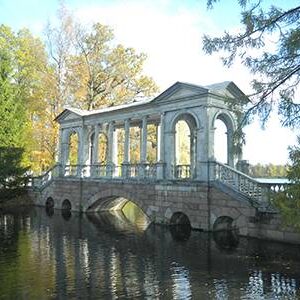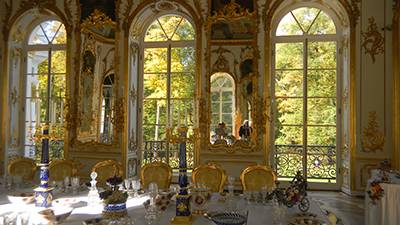Of all the Imperial Palaces none is more evocative of both the heyday and twilight years of the Romanov’s than those at Tsarskoe Selo, (Royal Village) which is situated 25 km from St Petersburg. This small town can boast of two world famous palaces – Catherine Palace (named after Catherine I, wife of Peter the Great) and Alexander Palace (a wedding gift from Catherine II to her favorite grandson, future Alexander I). The name of the town is also associated with the great poet Alexander Pushkin, who studied at the town’s Lyceum (a school for boys from Noble families) – so in 1937 its’ name was changed to Pushkin to commemorate the century after the famous poet’s death. Tsarskoe Selo was once a model town connected to Pavlovsk and St Petersburg by Russia’s first train line (built for the Imperial families convenience) and featuring electric lightning, piped water and sewage works. Its numerous villas for nobility were turned into orphanages after the Revolution when the town was renamed Detskoe Selo – “ Children Village.”
As part of our St Petersburg tours and shore excursions we also include the Sovereign’s Martial Chamber along with Catherine Palace and the Amber Room.
Catherine Palace with its blue and white fasade (created by Italian architect Rastrelli) avoided monotony by using a profusion of atlantes, columns, and pilasters. When entering inside you will find a continuous succession of interconnecting rooms in sumptuous Baroque style and somewhere in the middle of that enfilade is the famous Amber Room which was called by contemporaries “the eighth wonder of the world”. The palace was badly damaged during WWII (actually only the walls remained) and amber panels from the Amber room were stolen by the Nazi’s: we consider it to be the most expensive treasure of art which was ever stolen and never found…
Mr. Kedrinsky, the main architect of restoration project for Catherine Palace said in 1957 year that “the Amber room is like the lost picture of Leonardo da Vinci: both are impossible to restore!”
But they started restoration in 1979 and finished it in 2003 extracting 6 tons of amber (using actually only one third of it) at a cost of US $12 million. ($3.5 million was donated by the German company RUHRGAS). This process involved techniques which were invented by modern Russian masters during the process of restoration which helped to change the initial, natural color of pieces of amber. Even now they keep working to create different diplomatic gifts (such as amber icons) by the order of Russian government.
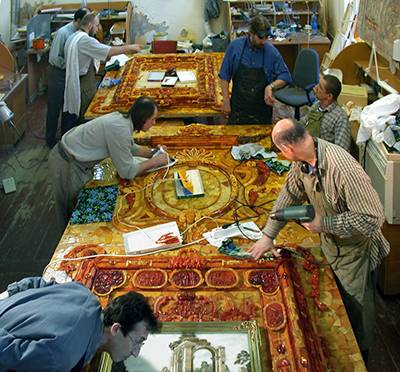
The best time of year to visit the Amber room is a dark winter evening (Palace working hours are from 10am to 5pm with day a off on Tuesday and the last Monday of each month) when outside the view is complete darkness and inside the amber panels are glittering and shining making you think you are in a fairy tale. However, most of the tourists arrive in summer, when the palace and park are overcrowded. In this case we can help you to avoid standing in long lines and not to overpay for entrance tickets. There is a chance to drop to the Amber Workshop as well to see how masters responsible for the restoration of “The Eighth Wonder of the World” keep creating other masterpieces; there will be a chance to take pictures in the workshop as it is not allowed to do that in Amber Room itself.
If you have time, don’t be in a rush to leave the grounds of the beautiful garden in front of Catherine palace: there are numerous garden pavilions and almost all of them are open for the public. Among a few worth of visiting (they are close to Catherine palace) are:
Agate Rooms are the private bath complex of Catherine II, and also called the “cold bath.” The pavilion was created in the the second half of the 18th century by the Scottish architect Charles Cameron and consists of several rooms including a Great hall, a study of the empress and her library. The Agate rooms was an ideal place of solitude and rest for Catherine II with the ground floor intended for taking a bath and the first floor being a reading room where the Tsarina could read her favorite books or write letters. During WWII Nazi Germany destroyed the Agate Rooms and they have been painstakingly restored to their former glory over three years, including 25 tons of jasper.
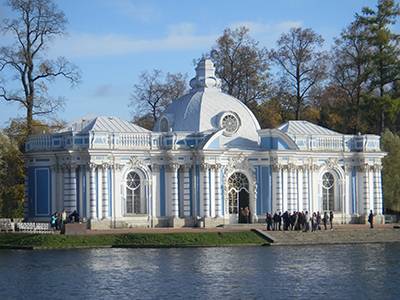
The Hermitage (French for “hideaway”) pavilion Its’ Baroque fasade echoes that of Catherine palace. Don’t miss the chance to get inside and see how royalty could arrange dinners for up to 36 people without any servant being on the same floor beside them (see picture).
Highly recommended for everyone but will evoke a storm of cheers if you are traveling with children.
Turkish Bath resembling an Ottoman mosque, never was used as a bath house, but as a luxurious garden pavilion for relaxation during long walks in the park (see picture below).
Pyramid It was here that Catherine II buried her favorite dogs (look at the picture of Catherine II walking in the park with her adored Zemira). Marble plaques with the names of dogs over their little graves didn’t survive however.

